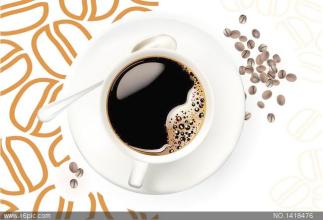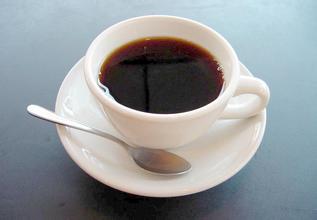Mild and insipid Hawaiian coffee Kona coffee boutique coffee bean flavor manor introduction
Hawaii is a paradise for tasting and buying coffee. Each island has several unique places for tourists and local residents to taste and buy coffee, including comfortable and warm shops and comprehensive centers to introduce coffee knowledge. In Hawaii, you can watch the fiery sunset sink into the red-orange sea, feel the fresh air filled with the scent of flowers, and sit by the sea and drink a cup of coffee. I'm afraid there is no place in the world that can offer you such enjoyment.
In 1813, a Spaniard first grew coffee in the ManoaValley Valley of Oahu, which is today the main campus of the University of Hawaii. In 1825, an English agronomist named John Wilkinson transplanted some coffee from Brazil to grow in the coffee garden of Chief Birch on the island of Oahu. Three years later, an American missionary named Samuel Riveland Rags brought the branches of the coffee tree from Birch Emirates Garden to Kona, a descendant of Arabica coffee that first grew on the Ethiopian plateau. To this day, Kona Coffee continues its noble and ancient lineage, Kona Coffee, which is fresh, clear, medium mellow and slightly sour. At the same time, it has a strong aroma and a long aftertaste. Most rarely, Kona Coffee has a blend of wine, fruit and spice, as fascinating as the colorful colors of this volcanic archipelago.
Generally speaking, the taste of Kona coffee belongs to a relatively mild category, so that some people think that this gentleness is synonymous with insipid, that Kona is too refreshing and too simple.
But if you are the kind of person who must slowly get into the state with the aroma of coffee before tasting it, Kona is the right coffee for you, because it is not as mellow as Indonesian coffee, nor as full-bodied as African coffee, nor as rugged as Central and South American coffee, Kona coffee is like a girl in the Hawaiian sunshine breeze, fresh and natural, tepid and produced in the Kona region of Hawaii. It is a rare species that can only be planted on volcanic slopes. The taste is rich and mellow, with a mixed aroma of wine, fruit and spice, with a special flavor. The selected Kona coffee has a moderate sour taste and a gentle and full-bodied taste, as well as a unique mellow flavor. As production dwindles and prices catch up with Blue Mountain Coffee, the strip off the coast of Kona, Hawaii, produces the best coffee in the world, with less than 2600 acres of coffee producing 2 million pounds of beans a year. With its aroma, unique taste and outstanding regional characteristics, Kona Coffee stands out in the international competition. People who like Kona coffee can make Kona coffee in person on the street of Kona Coffee. Most of the coffee that calls itself "Kona" now contains less than 5% of the real Hawaiian Kona coffee. Another good Hawaiian coffee can be found in the United States-Hawaii Kaj Farm Coffee (KaiFarms)

Important Notice :
前街咖啡 FrontStreet Coffee has moved to new addredd:
FrontStreet Coffee Address: 315,Donghua East Road,GuangZhou
Tel:020 38364473
- Prev

Introduction to the Flavor and Taste Manor of Lindong Coffee Bean in Sumatra, Indonesia
The capital Jakarta, located on the northwest coast of Java, covers an area of 740.28km and has a population of 10.187 million. It is a national political, economic and cultural center and a sea, land and air transportation hub, as well as a shipping center between southern Asia and Oceania. More than 500 years ago, Jakarta became a famous seaport for exporting pepper and spices. At that time, it was called Sunda Graba, which means coconut. Renamed Chajakarta in 1527
- Next

Soft, sour, sweet Costa Rican coffee estate flavor characteristics Introduction
Goddess Manor grows coffee organically, using native trees and fruit trees as shade for coffee. The fertilizer used is also coffee cherry fruit peach mixed molasses, added to the fertile soil with high mineral content in the adjacent mountain area, combined with microbial fermentation, to prepare organic fertilizer that can enhance the disease resistance of coffee value cultivation. California earthworms are also used as cultivation soil, and are directly used as the main fertilizer of coffee trees during the fertilization period.
Related
- Detailed explanation of Jadeite planting Land in Panamanian Jadeite Manor introduction to the grading system of Jadeite competitive bidding, Red bid, Green bid and Rose Summer
- Story of Coffee planting in Brenka region of Costa Rica Stonehenge Manor anaerobic heavy honey treatment of flavor mouth
- What's on the barrel of Blue Mountain Coffee beans?
- Can American coffee also pull flowers? How to use hot American style to pull out a good-looking pattern?
- Can you make a cold extract with coffee beans? What is the right proportion for cold-extracted coffee formula?
- Indonesian PWN Gold Mandrine Coffee Origin Features Flavor How to Chong? Mandolin coffee is American.
- A brief introduction to the flavor characteristics of Brazilian yellow bourbon coffee beans
- What is the effect of different water quality on the flavor of cold-extracted coffee? What kind of water is best for brewing coffee?
- Why do you think of Rose Summer whenever you mention Panamanian coffee?
- Introduction to the characteristics of authentic blue mountain coffee bean producing areas? What is the CIB Coffee Authority in Jamaica?

